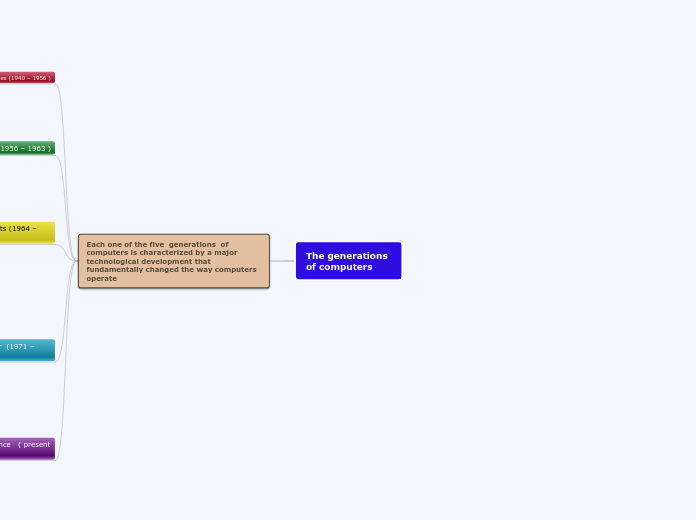
First generation : vacuum tubes (1940 – 1956 )
• The first computer systems used vacuum tubes for circuity and magnetic drums for memory
• These computers were very expensive to operate and in addition to using a great deal of electricity, de first computers, generate a lot of heat, which was often the cause of malfunctions
Second generation : transistors (1956 – 1963 )
• the transistors was far superior to the vacuum tubes, allowing computer to become smaller, faster, cheaper, more energy-efficient and more reliable than their first generation predecessors
• second generation computers still on punched cards for input and printouts for output
third generation : integrated circuits (1964 – 1971 )
• Transistor were miniaturized y placed on silicon chips , called smiconductors , which drastically increased the speed and efficienty of computers
• The punched cards and pintouts users interacted with third generation computers through and monitors
• Which allowed the device to run many different applications at one time with a central program that monitored the memory
fourth generation : microprocessor (1971 – present)
• the microprocessor brought the fourth generation of computers , as thousands of integrated circuits were built onto a single silicon chip
• microprocessor also moved out of the realm ares of life as more and more everyday products began to use microprocessors • Fourth generation computers also swa the development of guis, the mouse and handheld devices
fifth generation : artificial intelligence ( present and beyond )
• The use of parallel processingand super conductors is helping to make artificial intelligence a reality
• The goal of fifth-generation computing is to develop devices that respond to natural language input and are capable of learning and self-organization